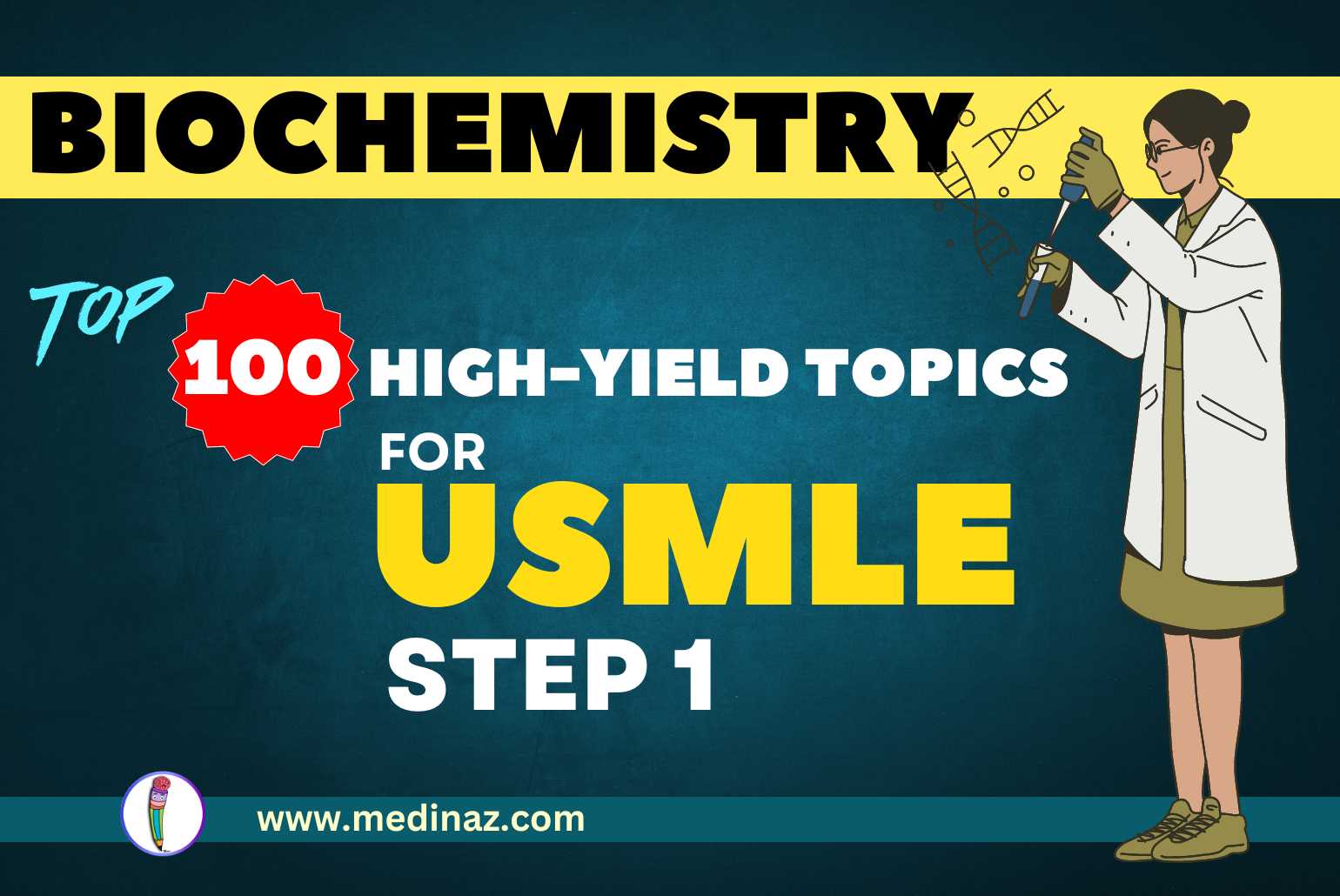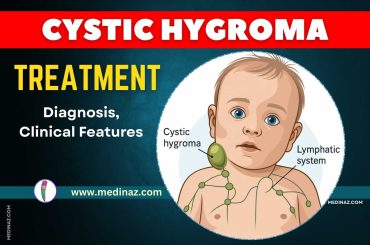Top 100 High-yield Biochemistry Topics for USMLE Step 1 Exam
Biochemistry is a foundational subject for the USMLE Step 1 exam and is crucial for several reasons:
- Understanding Disease Mechanisms: Biochemistry helps understand the molecular and biochemical underpinnings of diseases. Knowledge of pathways such as glycolysis, the citric acid cycle, and lipid metabolism is essential to understand how abnormalities in these pathways can lead to clinical conditions. For instance, understanding mitochondrial dysfunctions helps explain diseases like mitochondrial myopathies.
- Pharmacological Applications: Many drugs target specific enzymes and pathways discussed in biochemistry. For example, understanding the cholesterol synthesis pathway is vital for comprehending how statins work to lower cholesterol levels.
- Genetics and Molecular Biology: Biochemistry is closely tied to genetics and molecular biology, areas heavily tested on the USMLE Step 1. Understanding DNA replication, repair, and transcription processes are crucial for diagnosing and treating genetic disorders.
- Diagnostic Tools: Biochemical tests are part of routine medical diagnostics. Knowledge of biochemistry is necessary to interpret results of various blood tests, enzyme markers, and metabolic levels, which are integral to making clinical decisions.
- Metabolism and Nutrition: A solid grasp of metabolism is crucial for understanding nutritional needs and managing metabolic disturbances, such as diabetes mellitus or metabolic syndrome, which are common topics on the exam.
- Integration with Other Disciplines: Biochemistry integrates with other medical sciences like physiology, pathology, and pharmacology, making it essential for a holistic understanding of medicine. The USMLE Step 1 exam tests this integrated knowledge extensively.
Top 100 High-yield Biochemistry Topics for USMLE Step 1
Here is the list of Top 100 High-yield Biochemistry Topics for USMLE Step 1 exam in Alphabetic order:
- Alcohol Metabolism
- Amino Acid Absorption
- Amino Acid Catabolism
- Amino Acids
- Apolipoproteins
- Blotting
- Cell Cycle
- Cell Surface Proteins
- Chediak Higashi
- Cholesterol
- Chromatin Structure
- Chromosomal Diseases
- Chromosomal Structure
- Citric Acid Cycle
- Collagen
- Collagen and Elastin Basics
- Cytoskeleton Basics
- Cystinuria
- De Novo Nucleotide Synthesis
- Dietary Energy Content
- DNA Repair
- DNA Replication
- Ehlers Danlos
- Electron Transport Chain
- Elastin
- Endoplasmic Reticulum
- Epigenetics
- Ethanol Metabolism
- Extracellular Matrix
- Fabry disease
- Fat Soluble Vitamins
- Fatty Acid Metabolism
- Fructose Disorder
- Fructose Metabolism
- Galactose Disorder
- Galactose Metabolism
- Gaucher disease
- Gene Organization
- Genetic Principles
- Gluconeogenesis
- Glucose Transport
- Glycogen
- Glycolysis
- Golgi Apparatus
- Hartnup Disease
- Heme Metabolism
- HMP Shunt
- Hurler
- I Cell Disease
- Intermediate Filaments
- Kartagners Syndrome
- Karyotyping
- Ketone Bodies
- Kwashiorkor and Marasmus
- Lysosome
- Maple Syrup Urine Disease
- McCardles
- Metabolism of Exercise and Starvation
- Metabolism Overview
- Methanol Poisoning
- Microarrays
- Microtubules
- Mitochondria
- Modes of Inheritance
- Nucleotide Catabolism/Salvage
- Nucleus
- Osteogenesis Imperfecta
- OTC Deficiency
- Peroxisome
- Proteasome
- PKU
- Plasma Membrane
- Polymerase Chain Reaction (PCR)
- Population Genetics
- Post-Translational Modification
- Propionic Acid Pathway
- Protein Folding and Degradation
- Protein Structure
- Protein Synthesis
- Pyruvate Dehydrogenase Complex
- Pyruvate Metabolism
- Reverse Transcription
- RNA Polymerases
- RNA Processing
- RNA Types
- Signal Transduction
- Sorbitol
- Specifics about cilia structure
- Smooth vs. rough endoplasmic reticulum
- Tay-Sachs disease
- Trace Metals
- Transcription
- Transcription Regulation
- Triglycerides
- Trinucleotide Repeat Expansion Diseases
- Type of DNA Mutations
- tRNA
- Universal Electron Acceptors
- Von Gierkes disease
- Water Soluble Vitamins
Check more important USMLE topics
A Visual Learning Platform





